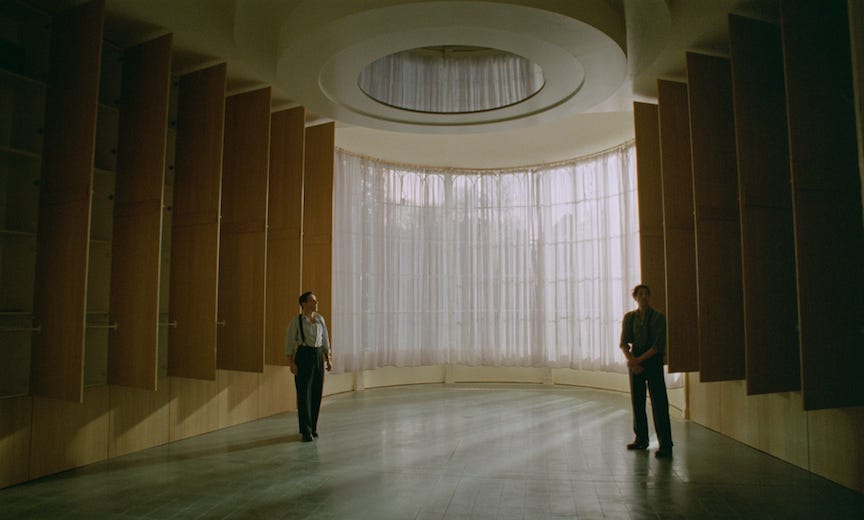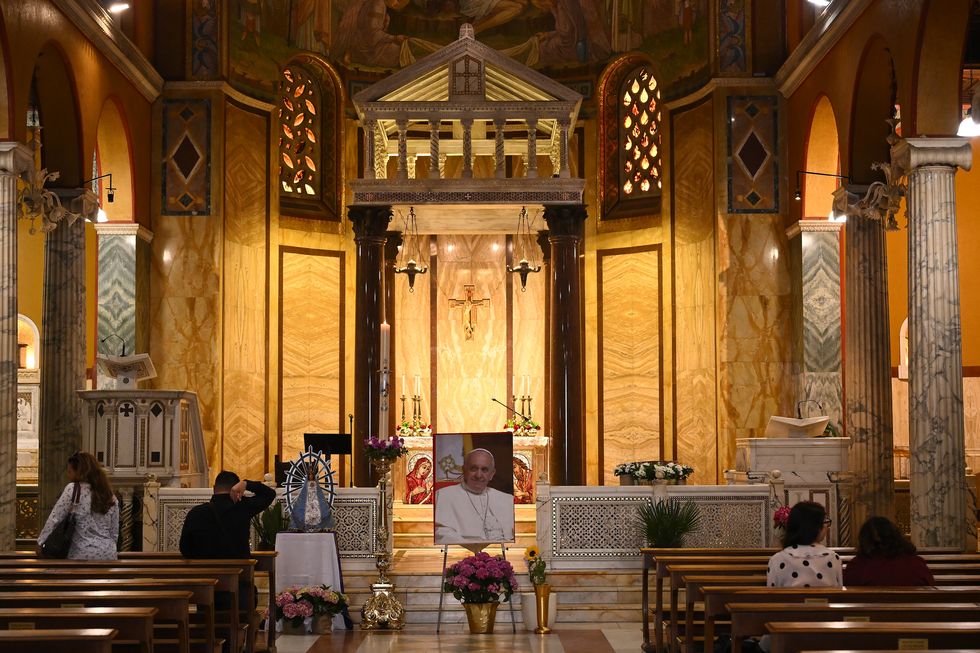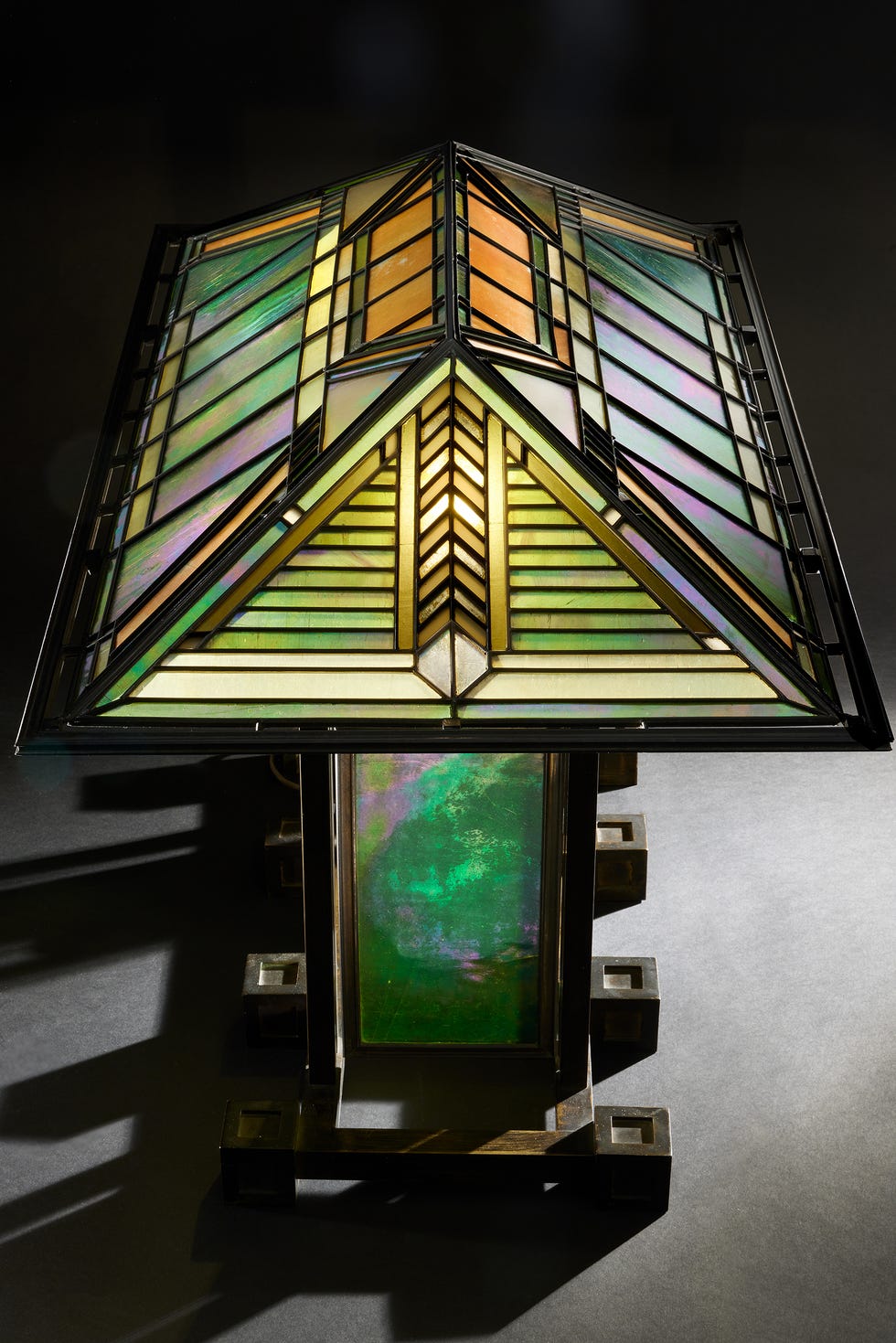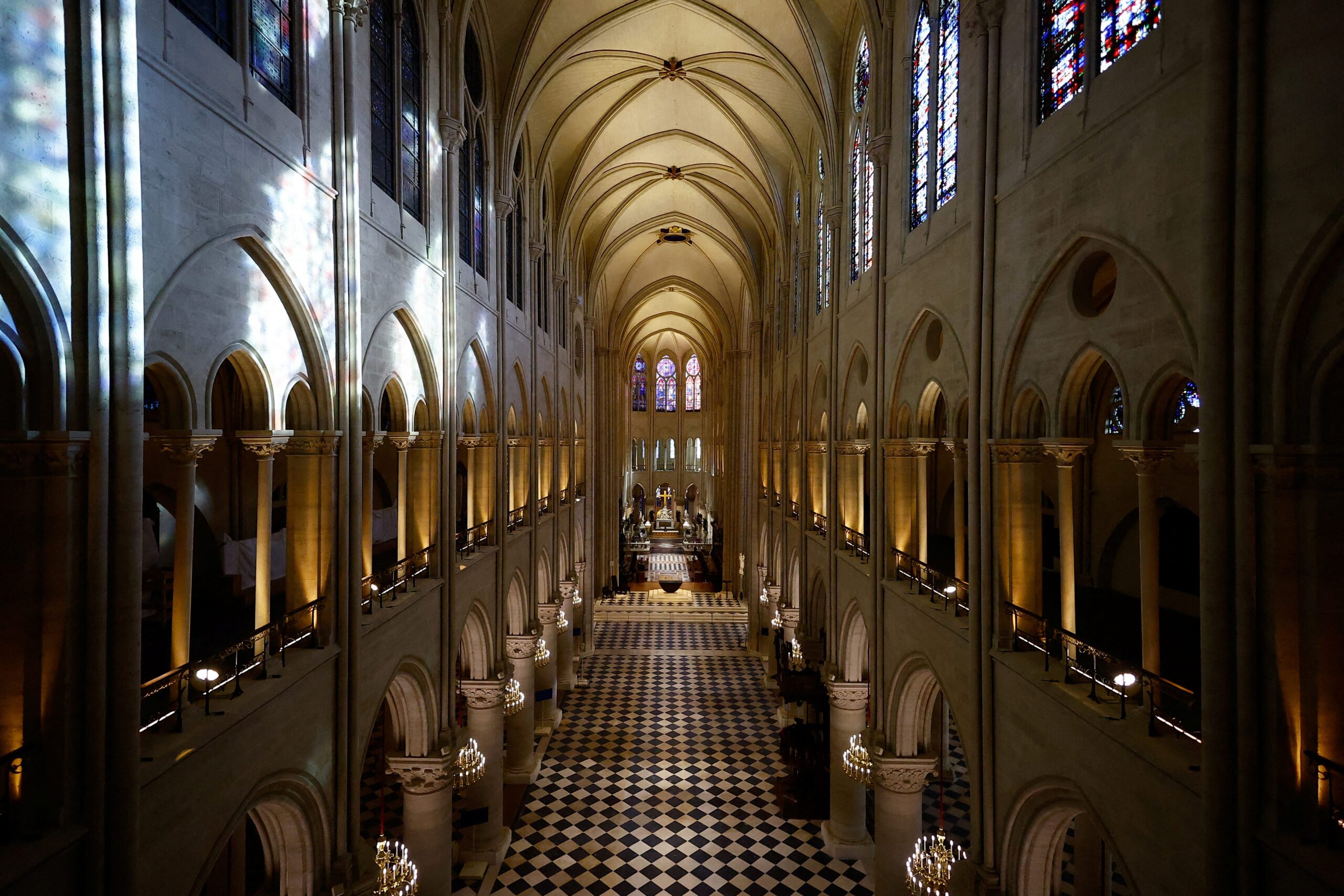While the glitz and glamour of Oscar season tend to focus on A-list stars and dazzling gowns, we at ELLE DECOR are more excited for the visual artistry that brings these stories to life: production design. The 2025 Academy Award nominees for Best Production Design have delivered unforgettable worlds, immersing us in everything from the bone-chilling castles of Transylvanian to the ink-black hellscapes of Dune II. These films showcase the transformative power of design, where every prop, backdrop, and architectural detail tells a story. Below, we speak with the production designers of five films that are total eye candy.
The Brutalist
Production Design: Judy Becker; Set Decoration: Patricia Cuccia
When asked whether we found this nomination surprising, we’ll vehemently shake our heads. The Brutalist cleaned up in the awards sphere, winning five awards at the Venice Film Festival, before sweeping the Golden Globes with seven awards, including best motion picture. But that’s not why we’d bet on this Oscar nominee contender. The magic in The Brutalist, a film about fictional Hungarian architect László Tóth (Adrien Body), lies not in what production designer Judy Becker built—but what she envisioned in the first place. With zero architectural training and a bare-bones budget, Becker channeled the ghosts of modernists like Marcel Breuer to build grand buildings and spatially-interesting rooms that resemble the work of a genius architect.
Becker conjured a building that would have been Tóth’s magnum opus— the Van Buren Institute— just as an architect would, starting with sketches and ultimately building a nine-foot model. While the Van Buren Institute was never actually built, it was designed well enough that it could have been. “There’s a part of me that wishes it could be built,” Becker says. She also designed the furniture in the film, combining Bauhaus aesthetics with midcentury American influences—albeit with her own spin for copyright reasons. For one chair, she combined tubular steel, a popular material at the time, with leather webbing inspired by American beach chairs. The result is a cantilevered chair that feels as if it belongs in the lexicon of iconic designer chairs. «I was very careful not to copy anybody,» Becker says. «I imagined that László would have gotten some inspiration from Americana.» Tóth and his life’s work seems so legendary that many wonder if he was a real historical figure. He isn’t. But for three-and-a-half hours, we were happily fooled. —Rachel Silva
Conclave
Production Design: Suzie Davies; Set Decoration: Cynthia Sleiter
Oh Father, where art thou? In Conclave—the Edward Berger-directed thriller chronicling the fictional election of a new Pope—we look inside the Sistine Chapel. In creating sets for the film, however, production designer Suzie Davies (you’ll know her work from the delicious psychological thriller, Saltburn) encountered one problem: filming is prohibited inside the 15th-century house of worship. The only thing to do was to reconstruct it, a feat Davies and her team accomplished in 10 weeks. But miracles do happen. At Rome’s Cinecittà Studios, the facility where the film was shot, Davies discovered a set of flat-packed scenery that had been used for another project. “It was packed down into flats which were eight by four feet, and we built them back up,” she told Variety. She also recreated Domus Sanctae Marthae (Pope Francis’s current digs) where the cardinals—starring Ralph Fiennes as Cardinal Lawrence—live during the papal conclave. “It was about creating an almost hermetically sealed prison, albeit a very posh prison, but with modern accouterments as well,” Davies, who worked alongside set decorator Cynthia Sleiter, told the outlet. Posh prison or not, the sets of Conclave can only be described with one word: Divine. —Anna Fixsen
Dune: Part II
Production Design: Patrice Vermette; Set Decoration: Shane Vieau
“Fear is the mind-killer” — and so is mediocre set design. Lucky for us, Patrice Vermette’s vision for Dune: Part 2 is anything but. Vermette, already an Oscar winner for Part One, crafted an entire world based on Frank Herbert’s 1965 novel, realized by director Denis Villeneuve, that feels both ancient and futuristic—and we’re here for every Brutalist, oil-slicked moment of it.
The film’s universe spans the wind-swept Brutalist structures of Arrakis (Dune’s capital city) to the ink-black industrial hellscape of the Harkonnen homeworld. Working across nearly 400,000 square feet of soundstages, Vermette’s team crafted innovative techniques like fabric-wrapped frames for shadow play and carefully controlled filming times to capture natural light. The Harkonnen’s colossal triangle-shaped arena (think: Roman Colosseum meets dystopian nightmare) showcases these techniques brilliantly. Meanwhile, the native Fremen’s underground “sietches” on Arrakis blend Bedouin, Mayan, and Aztec influences into sacred spaces carved beneath the sands. The environmental storytelling here is masterful: Arrakeen’s buildings feature angled facades to deflect punishing winds and thick rock walls to combat the merciless desert heat.
For Kaitain, the imperial seat of power, Vermette made history by being the first ever person to secure filming rights to Carlo Scarpa’s post-modern Brion Tomb—a sacred burial ground and garden complex in the mountains of Italy. Previously off-limits to film crews due to its cultural significance and delicate architectural elements, the location’s sophisticated concrete forms—sculpted with intersecting planes and geometric cutaways—provided the perfect visual metaphor for imperial taste and power. Like a sandworm to a thumper, we’re irresistibly drawn to the sets of Dune. —Julia Cancilla
Nosferatu
Production Design: Craig Lathrop; Set Decoration: Beatrice Brentnerová
While viewers of Nosferatu may think this story is a retelling of the classic Dracula tale or a remake of the century-old silent classic by F. W. Murnau, we interpreted it as a nightmarish tale of a real estate deal gone to hell. To recap: the pure-hearted Thomas Hutter (Nicholas Hoult), on orders from his boss, strikes out to the Carpathian mountains to sell fixer-upper Grünewald Manor to the mysterious Count Orlok (Bill Skarsgård). The deal is sealed and plagues, pestilence, and satanic bodice-ripping ensues. Whether you cringed or chuckled amid the film’s more—erhm—erotic moments, we can all agree that the sets, helmed by production designer Craig Lathrop and set decorator Beatrice Brentnerová, were straight out of our Goth dreams. Orlok’s lair, for instance, was shot in Transylvania (an actual region of Romania) at Corvin Castle. Those spooky interiors, however, were designed on a sound stage “I looked at a lot of castles in the Czech Republic, probably all of them,” Lathrop told Deadline. “They’re all beautifully refurbished and ready for tourists to come through, but that’s not who Orlok is, right? Orlok has been in his sarcophagus for at least a hundred years, probably closer to two. He is in disrepair and decay and almost diseased, and you want to feel that.” As far as the Oscars go, it’s safe to say that this is a film we’re staking (sorry) our bets on. —A.F.
Wicked
Production Design: Nathan Crowley; Set Decoration: Lee Sandales
This nomination shouldn’t come as a shock to anyone, unless, perhaps you’ve been living under a rock. “I’ve done a lot of very big films,” production designer Nathan Crowley, who has also worked on Interstellar and Dark Knight, told ELLE DECOR. “But this was the biggest film by far I’ve ever done in my life.”
And it shows. We’re talking a $150 million budget, three massive English backlots, and a Munchkinland spanning 6.8 acres of countryside. Here, there are nine million real tulips (yes, million), witch-hat roofs dripping with greenery, and stucco houses whose doors feature intricate floral carvings.
But it’s the showstoppers that really sell the sorcery: Shiz University blends Venetian palazzo and Gothic grandeur, with its giant rotating library bookshelves that transform for dance numbers and a Grand Canal-inspired water entrance. For transport to the Emerald City, Crowley and his team crafted a 106-foot clockwork train inspired by Louis XV’s mechanical automatons, setting it against Andrew Wyeth-worthy fields of barley.
The Emerald City itself rises 45 feet into the air with structures that Crowley says “had to rise from the landscape like a singular emerald jewel.” Inside the Wizard’s Palace, a towering Great Hall leads to perhaps one of the most impressive feats: a 20-foot mechanical head operated by hydraulics and puppetry. We’re clicking our heels for more. —J.C.
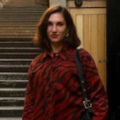
Anna Fixsen is the deputy digital editor of ELLE DECOR, where she oversees all facets of ELLEDECOR.com. In addition to editing articles and developing digital strategy, she writes about the world’s most beautiful homes, reviews the chicest products (from the best cocktail tables to cute but practical gifts), and reports on the most exciting trends in design and architecture. Since graduating from Columbia Journalism School, she’s spent the past decade as an editor at Architectural Digest, Metropolis, and Architectural Record and has written for outlets including the New York Times, Dwell, and more.

Julia Cancilla is the engagement editor (and resident witch) at ELLE Decor, where she manages the brand’s social media presence and covers trends, lifestyle, and culture in the design world. Julia built her background at Inked magazine, where she grew their social media audiences by two million, conducted interviews with A-list celebrities, and penned feature articles focusing on pop culture, art and lifestyle. Over her five years of digital media experience, Julia has written about numerous topics, from fashion to astrology.
Rachel Silva is the associate digital editor at ELLE DECOR, where she covers all things design, architecture, and lifestyle. She also oversees the publication’s feature article coverage, and is, at any moment, knee-deep in an investigation on everything from the best spa gifts to the best faux florals on the internet right now. She has more than 16 years of experience in editorial, working as a photo assignment editor at Time and acting as the president of Women in Media in NYC. She went to Columbia Journalism School, and her work has been nominated for awards from ASME, the Society of Publication Designers, and World Press Photo.
